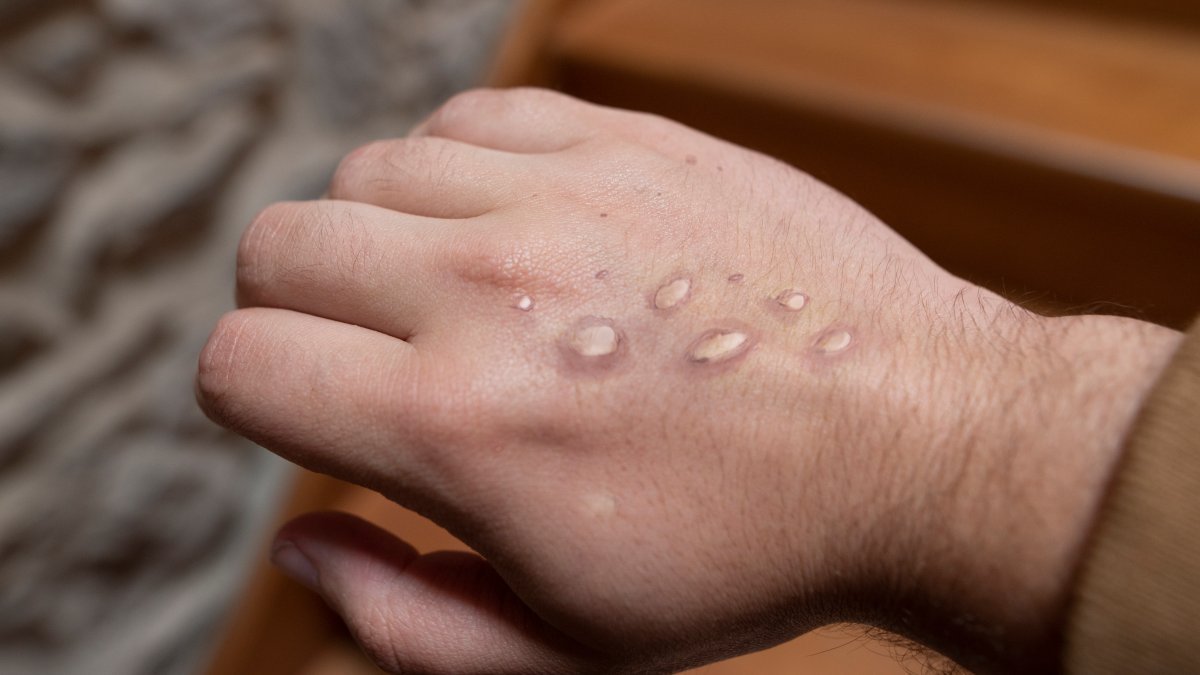
Symptoms take 7-14 days to show, but can take up to 21 days to show
There is new evidence that some people may be infected with monkeypox without having symptoms of the virus, suggesting it could be spreading far more widely than currently understood.
A pre-print study from Belgium published Tuesday, which has not yet been peer-reviewed, found multiple patients of a sexual health clinic there tested positive for the virus despite having neither symptoms nor known exposure. One of them, who had no travel or known contacts with infected people, was positive even before the country's official first case of the current outbreak.
According to the authors, about 1.3% of the samples tested in May for gonorrhea or chlamydia subsequently also tested positive for the orthopoxvirus that causes monkeypox.
"All three men denied having had any symptoms in the weeks before and after the sample was taken. None of them reported exposure to a diagnosed monkeypox case, nor did any of their contacts develop clinical monkeypox," the authors wrote.
Get Tri-state area news and weather forecasts to your inbox. Sign up for NBC New York newsletters.
"The existence of asymptomatic monkeypox infection indicates that the virus might be transmitted to close contacts in the absence of symptoms. Our findings suggest that identification and isolation of symptomatic individuals may not suffice to contain the outbreak," they added.
According to the authors, there is only limited and indirect historical research to suggest asymptomatic infection with monkeypox is even possible -- until now, they say, it was generally believed that infection led to symptoms.
The CDC has identified nearly 7,000 cases of monkeypox in 52 countries during the current outbreak, including 559 in the United States.
About 20% of those U.S. cases are in New York City, where known infections are doubling weekly.
Monkeypox: The Latest
How Do You Catch Monkeypox?
The CDC previously issued new monkeypox guidance as the number of suspected cases nationwide boomed, marking America's largest-ever outbreak of monkeypox, which typically has been confined to other continents.
While the CDC says the risk to the general public remains low, people are urged to avoid close contact with those who are sick, including those with skin or genital lesions, as well as sick or dead animals. Anyone displaying symptoms, like unexplained skin rash or lesions, should reach out to their healthcare providers for guidance.
It is also advised to avoid eating meat that comes from wild game or using products (such as creams, powders or lotions) that come from wild animals from Africa.
What Is Monkeypox?
Monkeypox was first discovered in 1958, when outbreaks occurred in colonies of monkeys kept for research -- resulting in its name. (What you need to know about monkeypox.)
The first case in a human was reported in 1970 in the Democratic Republic of the Congo, which still has the majority of infections. Other African countries where it has been found: Cameroon, Central African Republic, Cote d’Ivoire, Democratic Republic of the Congo, Gabon, Liberia, Nigeria, Republic of the Congo and Sierra Leone.
Human symptoms of monkeypox are similar to but milder than the symptoms of smallpox, the CDC says. It presents itself as a flu-like illness accompanied by lymph-node swelling and rash on the face and body.
How Long Does Monkeypox Last?
Monkeypox starts off with fever, headache, muscle aches, and exhaustion. Monkeypox also causes lymph nodes to swell, something that smallpox does not. The incubation period is usually 7−14 days but can range from 5−21 days.
The CDC is urging healthcare providers in the U.S. to be alert for patients who have rashes consistent with monkeypox, regardless of whether they have traveled or have specific risks for monkeypox. See more information from the travel notice here.